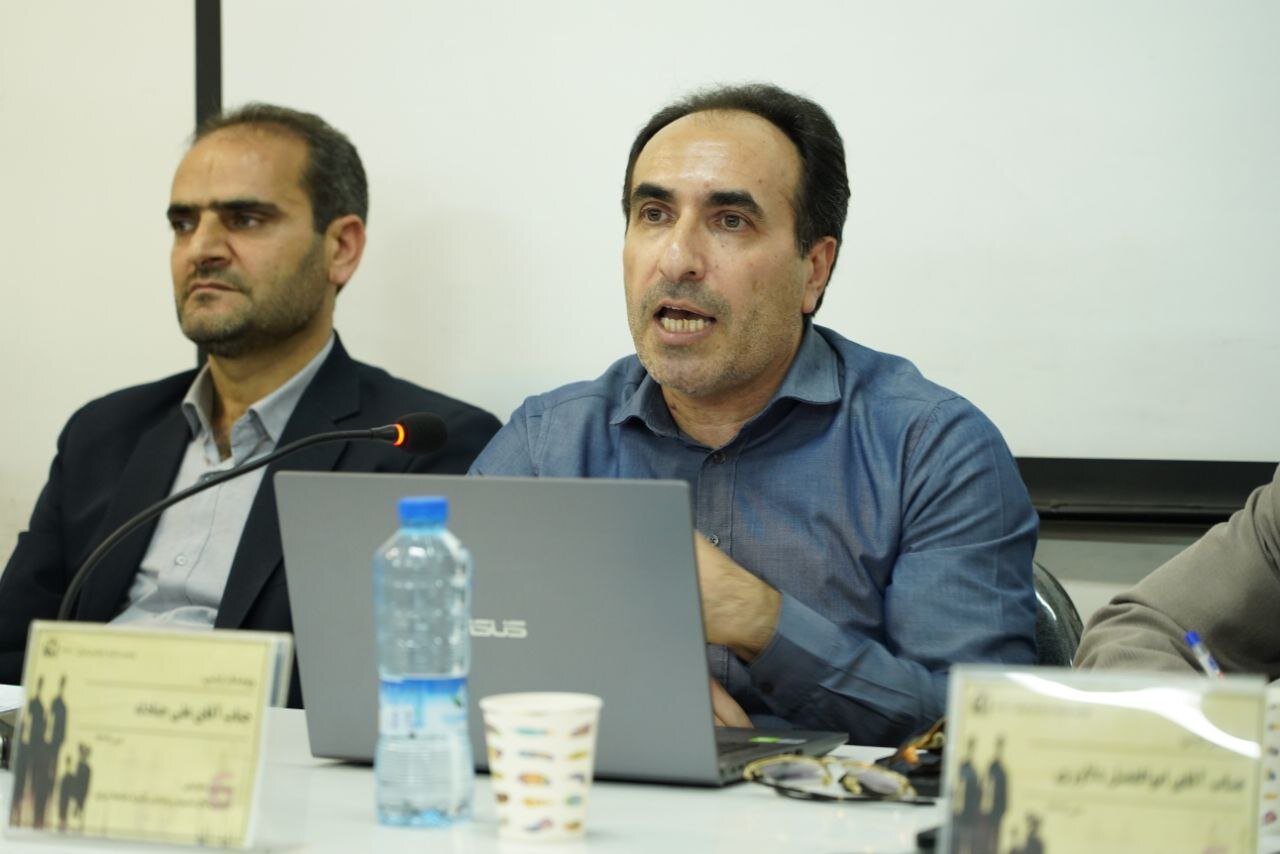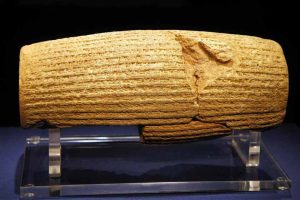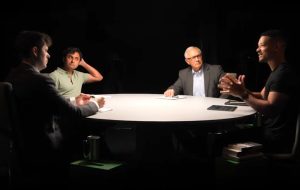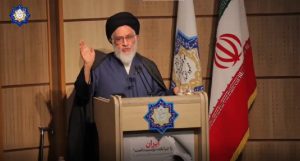Group of Thought: At the Concept and Theoretical Conference on the Iranian Society of Sociology, a specialized panel on the “female, life, freedom” movement and analysis of Iran’s future dimensions, capacities and challenges were held. There were four lectures in the panel, with the views of the doctor Mohammad Javad Gholamreza KashiSeparately published in News Agency. The following is the views of the three other speakers at the meeting. At the meeting, the “female, life, freedom” movement was not a mere protest, but a structural demand that is rooted in the deep contradiction between the ruling ideology and the desires of the younger generation. Dr. Azam Khatam considers the main reason for the protests to be the intertwining of the system of discrimination against women with the identity of political governance as well as the “crisis of adulthood” among the youth. That is due to the inability of the economic structure to provide their independence. The key concept of movement, Demanding “ordinary life” It was a reflection of the reaction of the government’s many interventions in everyday life. Freud Basmochi emphasized the central role of the women’s movement. He views the movement as a powerful replacement for two “return to monarchy” or “superficial reforms” and considers it capable of drawing a “third path” for the future of Iranian democratic because of the “intersection” approach. Dr. Nima Shojaee points to the risk of “confiscating” the movement. He considers the reason for the “non -vowel” of the demands of the movement inside the absence of organic intellectuals who are talking to power instead of people’s narratives. This eliminates the opportunity to turn the movement into a “political point” to the transition to democracy. This report is below:
****
Nima Shojaee: Failure of the Social Engineering Project and Movement Confiscation
In the panel Specialized panel on the “female, life, freedom” movement and analysis of Iran’s future dimensions, capacities and challenges, Dr. Nima Shojaei spoke on the subject of “Street Democracy: The Failure of the Social Engineering Project and the Eruption of Social Movements in Post -Revolutionary Iran.” “The confiscation of central signals and the construction of an overturned image of them has existed in many movements, including the constitution,” she said, referring to Israeli Prime Minister Netanyahu’s speech in a speech by Israeli Prime Minister of Movement.
Shojaee stated the main point of his speech: In Iran, there is so much literature on the female movement of freedom -produced life, and we are faced with the phenomenon of movement and its absence. One of the reasons for this is the inability and absence of organic intellectuals to be present in order to vowel the movement.
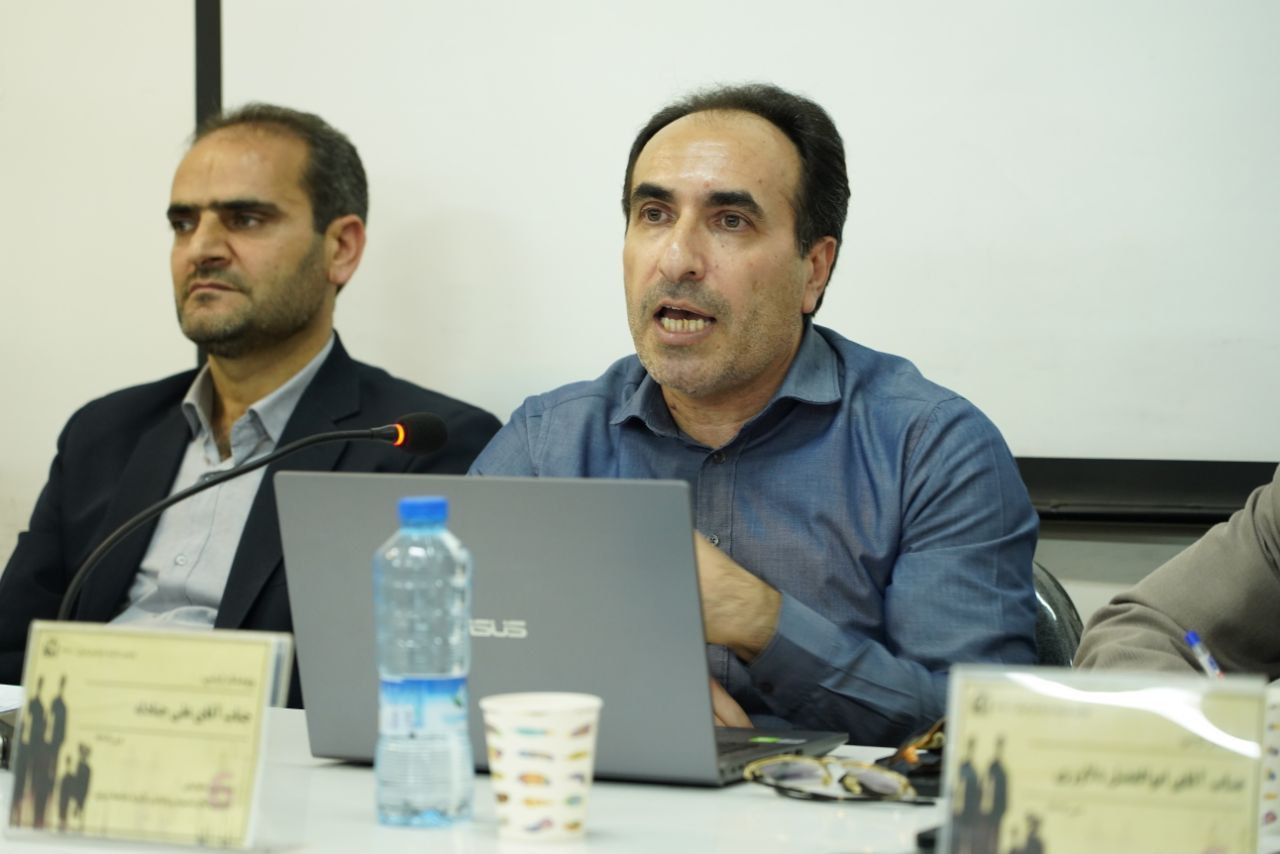
Dr. Nima Shojaee- Photographer: Forough Hanatoushzadeh
“This is a historical issue,” he said. The Iranian intellectual movement should talk about the demands of the general public, while constantly seeking to talk to the government rather than talk to the people. For our politically intellectuals, we once take the pressure from the bottom, the bargaining from the top, the power of power, one time the opening, and the other time of consensus. While a movement like a woman of freedom life takes place in the continuation of protests 1 and 2, and a series of developments take place in the language of political sociology. If our flow is capable of managing it for organic, our movement will lead to the transition to democracy or institutionalization. While our intellectual currently talks to the government and prefers to receive a number of concessions.
Shuja’i said at the end: One of the issues is the absence of a fair narrator in developments; All the literature of the female movement is produced outside of Iran, both academically, not in the public space. While we have to put these issues in person, we should look for a solution for them. When we can be a fair narrator, create the literature of the movement inside and talk about these demands in politics, then the confiscation does not happen.
Azam Khatam: Structural Analysis of Movement: Roots and Widespread
At the beginning of the meeting, Dr. Azam Khatam, a professor at the University of York Canada and urban studies researcher, gave a lecture online on “the futurism of Iranian society from the analytical perspective of the Freedom Life Movement at the Iranian Academy of Studies”. She expressed her material by examining the works produced for the Freedom Life, including three books, 2 articles outside Iran, and a few notes published in Iran’s journals, and referred to three important views for researchers.
Khatam said: Three angles of vision were important for researchers at the Iranian Studies Journal, which included why and how the protests and its perpetration of the subject of the hijab were reflected on the subject of structural changes, the capacity to transform the movement, the evil and imagination that the actors have produced in the slogans and cultural products produced.
He said that gender studies and sociologists from the field of social analysis played a more active role in editing the works. The first book was published by a Jordanian-American writer named “The Woman of Life, Voice and the Art of Protest in Iran” in year 6, and then Arash Azizi, a professor at Boston University, a book called “What do Iranians want?” Adapted from Michel Foucault’s book.
Khatam further added: “According to researchers, the stimuli and trends that made this protest move towards structural protest is the intertwining between the system of discrimination against women and the identity of political governance in the country; In fact, there is an inherent conflict between the ideologies of the ruling system and the desires of the younger generation, and the hijab is one of the red lines; It is natural that the demand for free coverage becomes a comprehensive demand and structure.
“Many people spoke of this movement as a movement that lacked capacity,” he said. The main emphasis on published works is on the potential solidarity of the people. Based on Arash Azizi’s words, women can be said to be a link of communication, and because of their presence among the various strata, they can mobilize all of these forces to protest. Khosrow Khawar also sees a connection between this movement and the protests of the year 1 and 2; And he believes that the cultural tension of the yarn is a rosary that connects the dissatisfaction of the intellectuals with the protests of women and youth. He does not claim that all classes are present in the movement, but states that due to the poverty of the middle class while preserving the cultural characteristics of that class, it can be said that most of the strata are present in the movement.
Dr. Khatam said: “In the collection of analysis I wrote, I have relying on the issue of women and youth and in my opinion, it was a national movement because it was the phenomenon of a youth crisis in the national country, but as far as I know, most of the activists were from different generations of youth. The crisis analysis of this generation is beyond the gender issues that I have defined as the “crisis -to -adult crisis”, and I have discussed why an neoliberal, while oil -based, is not able to provide youth economic independence opportunities.
He continued: The important point is the absentees of the movement that are not addressed in the analysis, but all those who did research in Iranian geography easily recognize the absentee provinces in the movement. Of the five cities, about 5 cities were absent; So it can be said that this movement was able to learn, but Beyond social groups did not goThough there was empathy with it.
Khatam added: The concept that was repeated in the movement was the concept of ordinary life. The demands of ordinary life in the production of art were repeatedly presented, including in the made trainees in which ordinary life had a manifestation. There are two different perceptions of the concept of this ordinary life in the movement. Maryam Alamzadeh wrote an article entitled “Revolution for Normalization” in which he speaks of a contradiction; Because they do not revolutionize for normal life. He explains why the concept of ordinary life in the context and context that the government has a lot of interventions in the daily life of citizens and the ideology of powerful governance becomes important and this has a revolutionary potential. Khosrow East also adds in the same framework that the demands of a happy life is a ontological reaction of protesters to the mourning structure. On the contrary, there are those who believed that concepts of ordinary life led to the right -wing tendencies and used popular imagination to show the discourse of return to the past as a model of normal life that should be spread in society.
At the end of his remarks, Khatam added: “The twelve -day war, determined that we are sensitive in geopolitics and this geography can be tied to our desires and how it is raised. In our imagination for the future, this geopolitics must definitely play a role. Crossing the conditions of war may make a normal life in the form of Benz -Salman for Iran. I think post -movement developments show that the structure of governance is reluctant to normalize and this desire is not fluent; Also, the world system does not give Iran the opportunity to normalize.
Freenaz Bassemchi: The Women’s Movement Charts Third Route and Crossing Duality
The second speaker of the panel, Frynaz Basmachi, was a doctoral student in sociology, who described the topic of “The Women’s Movement, Iran’s Future Future”. She spoke on a way to the future of the history of the women’s movement in Iran and a way to the future.
Initially, Basmoch said of the roads ahead of Iran, adding: “Many ways for the future of Iran and the passage of this historical moment have been designed. But most of these routes have failed to give a comprehensive perspective that bring all people together under a shared umbrella. The absence of such a framework has divided public talks on Iran’s future into two limited paths; Returning to the past or continuing the current system with superficial reforms. The idea of the third route, which provides change, is often considered unrealistic because of institutional imagination and previous networks.
Basmochi goes on to ask, “Can this dichotomy be gone through?” What can be the role of women’s and feminist movements in presenting this new framework? ” In response to the two questions, he says: These movements can provide a powerful alternative and create a transformation framework that links Iran’s past and present. He said: “Feminist activities in Iran are not a marginal concern, but they are an integral part of the widespread struggle for freedom and democracy.”
“The roots of the women’s movement in Iran dates back to the 5th century; Women in the Constitutional Revolution, and afterwards, were involved in establishing secret associations to nurture groups in order to obtain the right to education and social participation. In the early 9th century, women were educated, and at the same time female journals such as women’s voices, knowledge and letters of women became platforms to discuss social issues, promote literacy and criticize hijab practices. During the first Pahlavi era, part of modernization was accompanied by the demands of women, however, grammatical policies such as the banned hijab were implemented without the consent of women, and as a result, patriarchal control continued. During the second Pahlavi period, the women’s activity was opened again, as well as organizations such as the National Council of Women and the Preservation of Iranian Women, and eventually succeeded in reclaiming the right to vote and entering the government in the White Revolution.
He said. Women with different intellectuals, from religious to secular and leftist, also had a strong presence in the revolution; They helped the revolution by criticizing Pahlavi gender policies and participating in protests. However, many stood up to the mandatory to mandate the veil; A prominent example of this resistance is the widespread demonstration of World Women’s Day in March. Despite these protests, the veil became the law and restrictions on women’s rights were imposed. Women’s support was opened up from Mohammad Khatami in the year. Also in the elections, women were central to the presence and protested against political discrimination, guidance patrol and the elimination of female candidates. In year 4, with the death of Mahsa Amini, a new wave of protests emerged as a result of part of the discriminatory government policies.
“In general, feminism as a socio -political movement is beyond gender and is fundamentally related to the issue of power,” Basmoch said. In fact who is the power of the hand and how power is in the structures of domination; It is a pervasive and intersection. Intersection is one of the main foundations of women’s movements in recent decades, which is rooted in black feminism and shows how racial, social, class, gender, tendencies, ethnicity, nationality, age and ability intersect together and form life experiences in power relations. Therefore, according to this view, feminist movements in Iran form the practical frameworks that make a democratic future.
In the end, she said: “The female movement of freedom is an important turning point in the history of social movements that shows that feminist and feminist activity, along with empowering women, unite them to build a common future.”
Read more:
Jalai Pour: With Ali Karimi and George Town Council, the 6 -day war has doubled the Friday prayer population / Iran; Kinetic community
Which elections made people disappointed? / Democratic Government formed in the minds of the people / liberation from the patriarchal government by social dialogue and increased government accountability capacity
Javad Kashi’s criticism of the fascination of supporters of political Islam, reformists and opposition / discredit violence with the dignity of friendship and love / How was Iran empty of love and friendship?
Parviz Piran’s narrative of women’s power: The key to the “momentary society” is in the hands of women / Collective wisdom and the nightmare of “reverse modernity” in Iran’s 5 -year history
The sovereignty is two historical ways / Many of the disqualified can be appointed as Larijani.
1
منبع: www.khabaronline.ir

